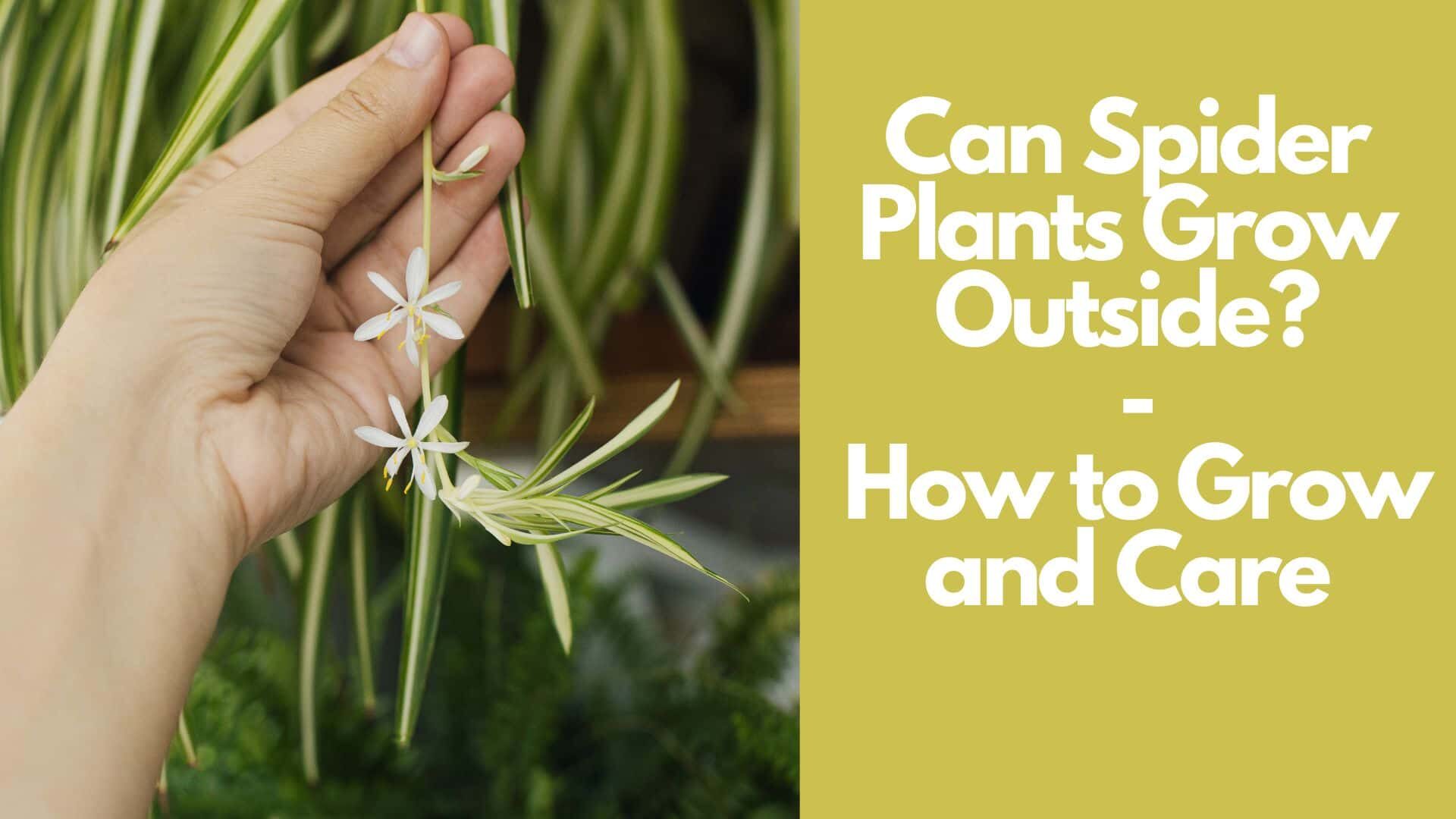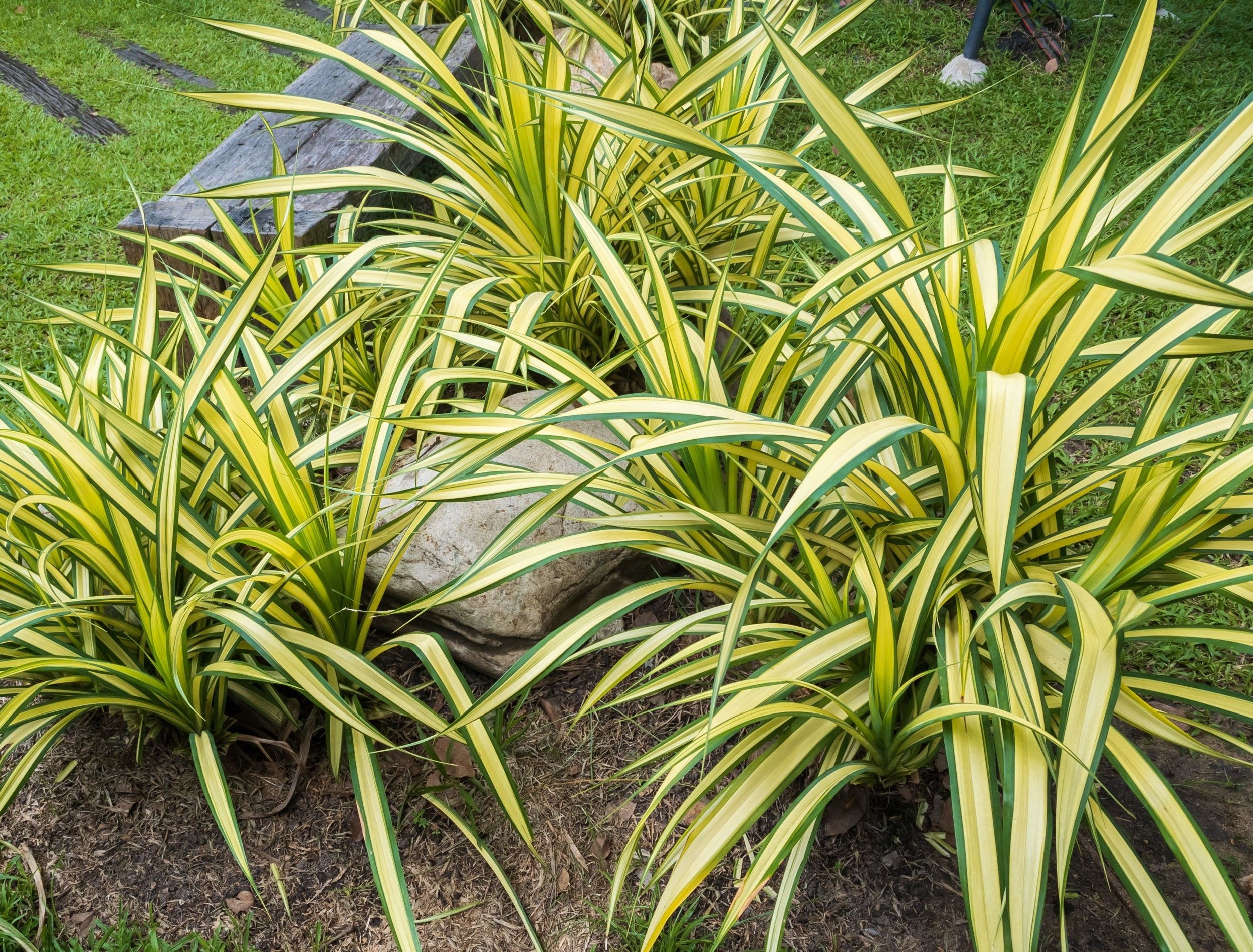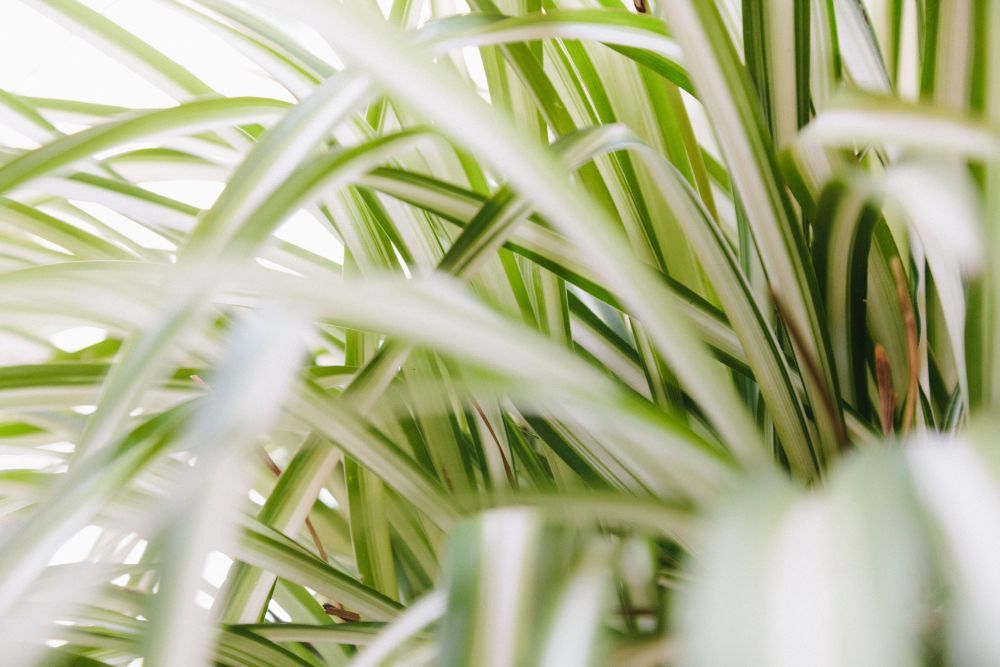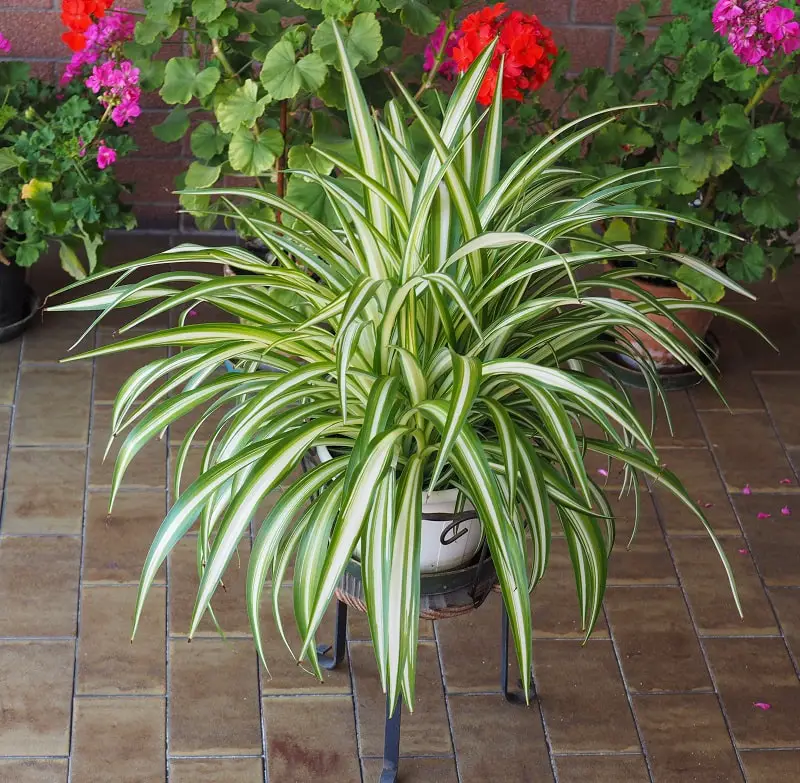Can Spider Plants Survive the Great Outdoors?
Spider plants are one of the most popular and versatile houseplants, known for their elegant white blooms and baby plantlets that dangle from the mother plant like a green and white chandelier. But can spider plants go outside? The answer is yes, but with some caveats. While spider plants can thrive in outdoor conditions, they require careful acclimation and attention to their specific needs. In this article, we’ll explore the benefits and challenges of growing spider plants outdoors and provide tips on how to make the transition successful.
Spider plants have been a staple of indoor gardening for decades, and for good reason. They’re easy to care for, produce beautiful flowers, and are great air purifiers. However, many gardeners are now discovering the joys of growing spider plants outdoors. With the right conditions and care, spider plants can add a touch of tropical elegance to patios, balconies, and gardens.
So, why move spider plants outside? For one, outdoor conditions can stimulate healthy growth and encourage blooming. Spider plants that are exposed to bright, indirect sunlight and gentle breezes tend to produce more flowers and baby plantlets. Additionally, outdoor spider plants can help purify the air and improve the aesthetic appeal of outdoor spaces.
However, before moving your spider plant outside, it’s essential to understand their specific needs. Spider plants prefer bright, indirect sunlight, but direct sunlight can scorch their leaves. They also require well-draining soil and consistent moisture. In outdoor conditions, spider plants are more susceptible to pests and diseases, such as spider mites, mealybugs, and root rot.
In the next section, we’ll explore the process of acclimating your spider plant for outdoor success. We’ll provide tips on how to gradually expose your plant to outdoor conditions, monitor its environment, and adjust its care accordingly.
How to Acclimate Your Spider Plant for Outdoor Success
Acclimating your spider plant to outdoor conditions is crucial for its survival and success. Spider plants that are suddenly moved from indoor to outdoor conditions can experience shock, which can lead to leaf drop, reduced growth, and increased susceptibility to pests and diseases. To avoid this, it’s essential to acclimate your spider plant gradually to outdoor conditions.
The acclimation process typically takes 7-10 days, during which time you’ll need to monitor your plant’s response to outdoor conditions and adjust its environment accordingly. Here’s a step-by-step guide to acclimating your spider plant:
Day 1-2: Move your spider plant to a shaded outdoor area, such as a patio or balcony, for 1-2 hours a day. This will allow your plant to get used to the outdoor temperature and humidity.
Day 3-4: Gradually increase the duration of outdoor exposure to 2-3 hours a day. You can also start to introduce your plant to indirect sunlight, but avoid direct sunlight, which can cause leaf scorch.
Day 5-6: Continue to increase the duration of outdoor exposure to 4-5 hours a day. You can also start to introduce your plant to gentle breezes, which can help to prevent fungal diseases.
Day 7-10: By this stage, your spider plant should be fully acclimated to outdoor conditions. You can now move it to its final outdoor location, where it can receive bright, indirect sunlight and gentle breezes.
During the acclimation process, it’s essential to monitor your plant’s response to outdoor conditions. Check for signs of stress, such as leaf drop, yellowing, or wilting. If you notice any of these symptoms, you may need to slow down the acclimation process or provide additional care, such as misting or shading.
By following these steps, you can help your spider plant to thrive in outdoor conditions. Remember to always prioritize your plant’s health and adjust its environment accordingly. In the next section, we’ll discuss the importance of choosing the right outdoor location for your spider plant.
Choosing the Right Outdoor Location for Your Spider Plant
When it comes to choosing the right outdoor location for your spider plant, there are several factors to consider. Spider plants can thrive in a variety of outdoor locations, but they do require some specific conditions to survive. In this section, we’ll discuss the key factors to consider when selecting an outdoor location for your spider plant.
Sunlight is one of the most important factors to consider when choosing an outdoor location for your spider plant. Spider plants prefer bright, indirect sunlight, but direct sunlight can scorch their leaves. East- or west-facing locations are ideal, as they provide gentle, indirect sunlight. Avoid south-facing locations, as they can receive direct sunlight, which can be too intense for spider plants.
Shade is also an important factor to consider. Spider plants can tolerate some shade, but too much shade can lead to weak and leggy growth. If you’re placing your spider plant in a shaded location, make sure it receives at least 2-3 hours of indirect sunlight per day.
Wind protection is also crucial for spider plants. Spider plants have delicate leaves that can be damaged by strong winds. Choose a location that provides some wind protection, such as a patio or balcony with a windbreak.
Some examples of suitable outdoor locations for spider plants include:
Patios: Patios are ideal for spider plants, as they provide a sheltered location with some wind protection.
Balconies: Balconies are also suitable for spider plants, as they provide a sunny location with some wind protection.
Gardens: Gardens can be a great location for spider plants, as they provide a sunny location with some wind protection.
When choosing an outdoor location for your spider plant, make sure to consider the specific conditions of the location. By choosing the right location, you can help your spider plant to thrive and enjoy the benefits of outdoor growth.
In the next section, we’ll discuss the importance of protecting your spider plant from pests and diseases outdoors.
Protecting Your Spider Plant from Pests and Diseases Outdoors
When moving your spider plant outdoors, it’s essential to protect it from pests and diseases that can thrive in outdoor conditions. Spider plants are susceptible to various pests and diseases, including spider mites, mealybugs, and root rot. In this section, we’ll discuss the common pests and diseases that can affect spider plants outdoors and provide tips on how to prevent and treat these issues.
Spider mites are one of the most common pests that can affect spider plants outdoors. These tiny, spider-like insects feed on the plant’s sap, causing yellowing leaves and fine webbing. To prevent spider mites, make sure to inspect your plant regularly and provide good air circulation. You can also use organic pest control methods, such as neem oil or insecticidal soap.
Mealybugs are another common pest that can affect spider plants outdoors. These small, white insects feed on the plant’s sap, causing stunted growth and yellowing leaves. To prevent mealybugs, make sure to inspect your plant regularly and provide good air circulation. You can also use organic pest control methods, such as neem oil or insecticidal soap.
Root rot is a common disease that can affect spider plants outdoors. This disease is caused by overwatering, which can lead to root decay and plant death. To prevent root rot, make sure to water your plant carefully and avoid overwatering. You can also use a well-draining potting mix to prevent waterlogged soil.
Other diseases that can affect spider plants outdoors include leaf spot and crown rot. These diseases are caused by fungal infections and can be treated with fungicides. To prevent these diseases, make sure to provide good air circulation and avoid overwatering.
In addition to these pests and diseases, spider plants outdoors can also be affected by environmental stressors, such as extreme temperatures and wind. To protect your plant from these stressors, make sure to provide some wind protection and shade during extreme weather conditions.
By following these tips, you can help protect your spider plant from pests and diseases outdoors and ensure its continued health and growth.
In the next section, we’ll discuss the importance of proper watering and fertilizing techniques for spider plants outdoors.
Watering and Fertilizing Spider Plants Outdoors
Proper watering and fertilizing techniques are crucial for the health and growth of spider plants outdoors. Spider plants require consistent moisture, especially when they’re exposed to direct sunlight and wind. In this section, we’ll discuss the importance of watering and fertilizing spider plants outdoors and provide guidance on how to do it correctly.
Watering spider plants outdoors requires careful attention to the weather conditions. During hot and dry weather, spider plants may need to be watered more frequently to prevent dehydration. On the other hand, during cool and rainy weather, spider plants may require less water to prevent root rot. It’s essential to check the soil moisture regularly and adjust the watering schedule accordingly.
When watering spider plants outdoors, make sure to water them thoroughly, allowing the excess water to drain from the pot. Avoid getting water on the leaves or crown of the plant, as this can cause rot and other diseases. Instead, water at the soil level, making sure the soil is moist but not waterlogged.
Fertilizing spider plants outdoors is also important for their growth and health. Spider plants require a balanced fertilizer that’s high in nitrogen, phosphorus, and potassium. You can use a water-soluble fertilizer or a slow-release fertilizer, depending on your preference. Apply the fertilizer according to the manufacturer’s instructions, taking care not to overfertilize, which can cause more harm than good.
Some tips to keep in mind when fertilizing spider plants outdoors include:
Use a balanced fertilizer that’s specifically formulated for outdoor plants.
Apply the fertilizer during the growing season, which is typically spring and summer.
Avoid overfertilizing, which can cause more harm than good.
Monitor the plant’s response to fertilization and adjust the application rate accordingly.
By following these tips, you can help your spider plant thrive outdoors and enjoy the benefits of healthy growth and blooming.
In the next section, we’ll discuss the importance of pruning and training spider plants for outdoor growth.
Pruning and Training Spider Plants for Outdoor Growth
Pruning and training spider plants are essential for promoting healthy growth, encouraging blooming, and controlling pests. Pruning helps to maintain the plant’s shape, encourages new growth, and removes dead or damaged leaves. Training, on the other hand, helps to control the plant’s growth habit and promote blooming.
Here are some step-by-step instructions on how to prune and train spider plants:
Pruning:
1. Remove dead or damaged leaves: Use scissors or pruning shears to remove any dead or damaged leaves from the plant.
2. Cut back long stems: Cut back long stems to encourage new growth and promote a bushy shape.
3. Remove flower stalks: Remove flower stalks after blooming to encourage new growth and promote more blooms.
Training:
1. Provide support: Provide support for the plant using stakes or a trellis to control its growth habit.
2. Train the stems: Train the stems to grow upwards or outwards by gently twining them around the support.
3. Encourage blooming: Encourage blooming by providing enough light and nutrients.
Benefits of pruning and training spider plants:
1. Promotes healthy growth: Pruning and training help to promote healthy growth and encourage new leaves and stems.
2. Encourages blooming: Pruning and training help to encourage blooming and promote more flowers.
3. Controls pests: Pruning and training help to control pests by removing dead or damaged leaves and stems that can attract pests.
By following these steps and tips, you can help your spider plant thrive outdoors and enjoy the benefits of healthy growth and blooming.
In the next section, we’ll discuss common mistakes to avoid when moving spider plants outdoors.
Common Mistakes to Avoid When Moving Spider Plants Outdoors
When moving spider plants outdoors, it’s essential to avoid common mistakes that can harm the plant or hinder its growth. In this section, we’ll discuss some common mistakes to avoid and provide tips on how to ensure a smooth transition.
Sudden changes in environment: Spider plants prefer gradual changes in environment, so sudden changes can cause stress and shock. To avoid this, acclimate your spider plant to outdoor conditions gradually, starting with partial shade and gradually increasing the amount of sunlight.
Inadequate acclimation: Acclimation is crucial for spider plants to adapt to outdoor conditions. Make sure to acclimate your spider plant for at least 7-10 days before moving it outdoors permanently.
Neglecting pest and disease control: Spider plants are susceptible to pests and diseases outdoors, so it’s essential to monitor your plant regularly and take action promptly if you notice any issues. Use organic or chemical control methods to prevent and treat pests and diseases.
Overwatering: Spider plants prefer well-draining soil and can be susceptible to root rot if the soil is too wet. Make sure to water your spider plant carefully and avoid overwatering.
Underwatering: On the other hand, spider plants also prefer consistent moisture, so make sure to water your plant regularly, especially during hot and dry weather.
Not providing enough light: Spider plants prefer bright, indirect light, so make sure to provide enough light for your plant to thrive. However, avoid direct sunlight, which can cause leaf scorch.
Not providing enough nutrients: Spider plants prefer well-balanced fertilizers, so make sure to provide enough nutrients for your plant to thrive.
By avoiding these common mistakes, you can ensure a smooth transition for your spider plant and help it thrive outdoors.
In the next section, we’ll summarize the benefits of growing spider plants outdoors and encourage readers to experiment with outdoor spider plant care.
Enjoying the Benefits of Outdoor Spider Plants
Spider plants are a popular choice for indoor gardening, but they can also thrive outdoors with proper care. By moving your spider plant outside, you can enjoy the benefits of improved air quality, aesthetics, and mental well-being.
Improved air quality: Spider plants are known to purify the air by removing toxins and pollutants. By moving your spider plant outside, you can enjoy the benefits of improved air quality and a healthier environment.
Aesthetics: Spider plants are a beautiful addition to any outdoor space. They can add a touch of greenery to your patio, balcony, or garden, and their white blooms can add a pop of color to your outdoor decor.
Mental well-being: Gardening has been shown to have a positive impact on mental health, and spider plants are a great choice for outdoor gardening. By caring for your spider plant outside, you can enjoy the benefits of reduced stress and improved mental well-being.
Experimenting with outdoor spider plant care: If you’re new to outdoor gardening, spider plants are a great choice to start with. They’re easy to care for and can thrive in a variety of outdoor conditions. By experimenting with outdoor spider plant care, you can enjoy the rewards of thriving plants and a beautiful outdoor space.
Conclusion: Spider plants can thrive outdoors with proper care, and by moving your spider plant outside, you can enjoy the benefits of improved air quality, aesthetics, and mental well-being. Experiment with outdoor spider plant care and enjoy the rewards of thriving plants.









